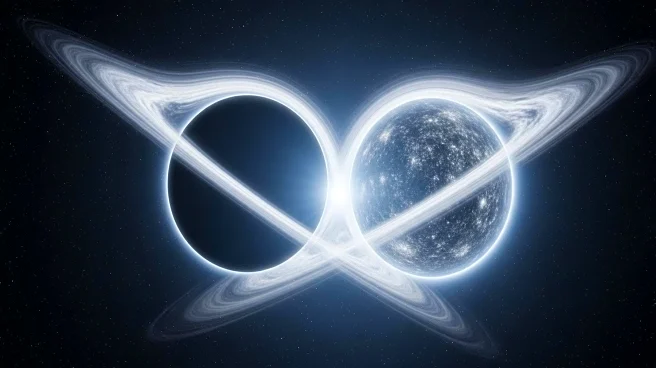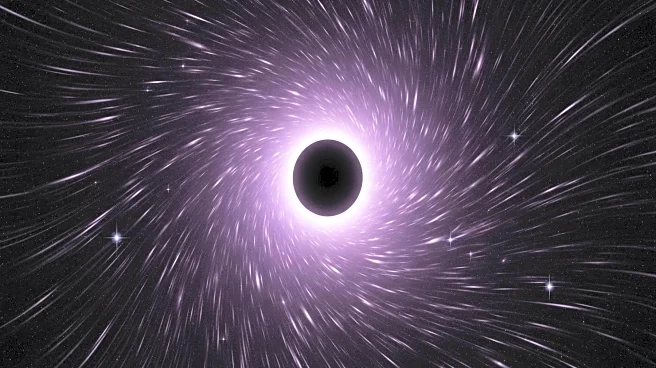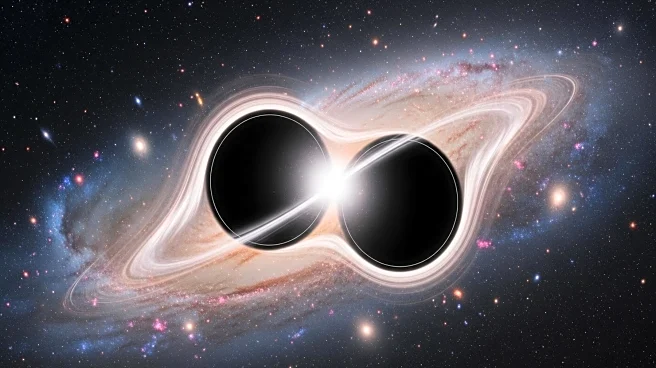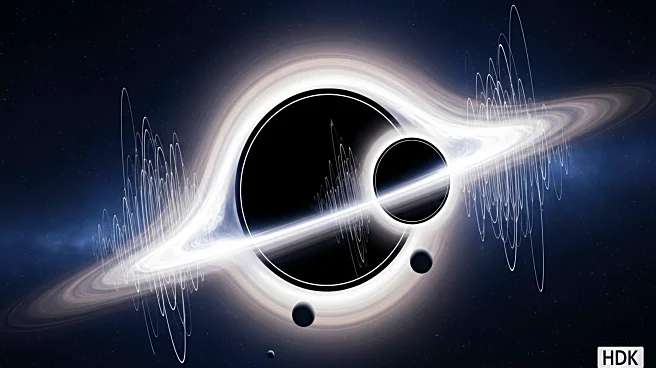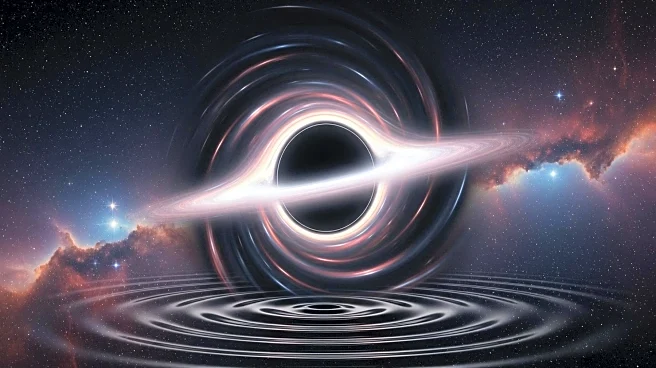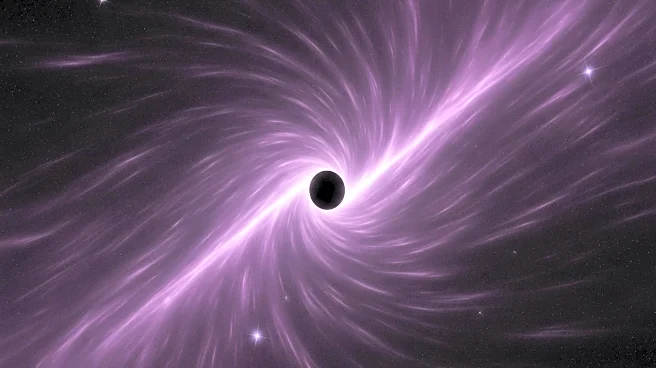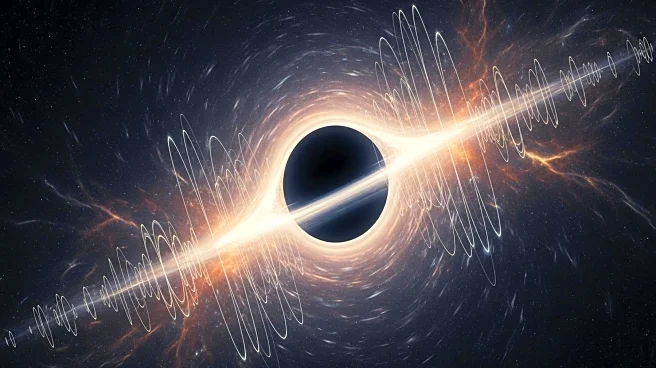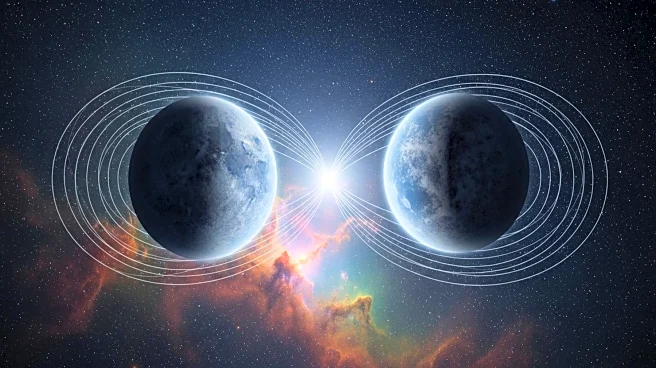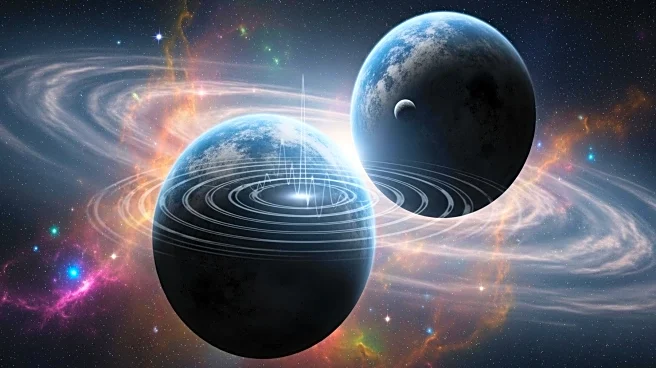What's Happening?
For the first time, scientists have measured the recoil velocity of a black hole resulting from a collision between two black holes. The event, known as a 'natal kick,' was observed through gravitational waves detected by the Advanced LIGO and Virgo detectors. The newly merged black hole was propelled through space at a speed of over 31 miles per second. This measurement provides insights into the dynamics of black hole mergers and the formation of supermassive black holes.
Why It's Important?
Understanding the 'natal kick' phenomenon is crucial for tracking the formation and evolution of black holes. This discovery enhances our knowledge of gravitational waves and their role in cosmic events. It also provides a new method for studying the motion and interaction of black holes, which could lead to further discoveries about the universe's most enigmatic objects.
What's Next?
Researchers plan to continue studying black hole mergers using gravitational waves and visible light. This ongoing research aims to uncover more about the growth and behavior of black holes, potentially leading to new theories about their role in the universe.


